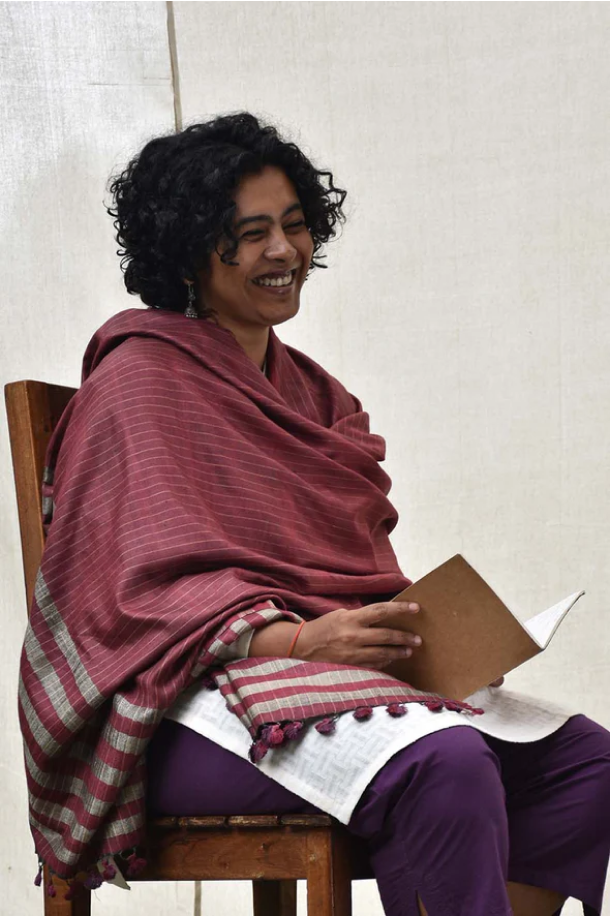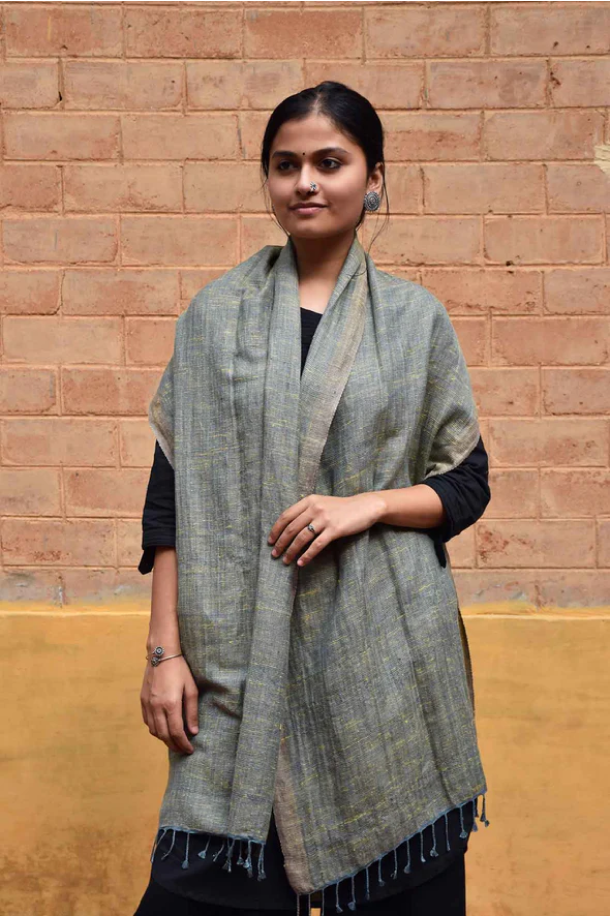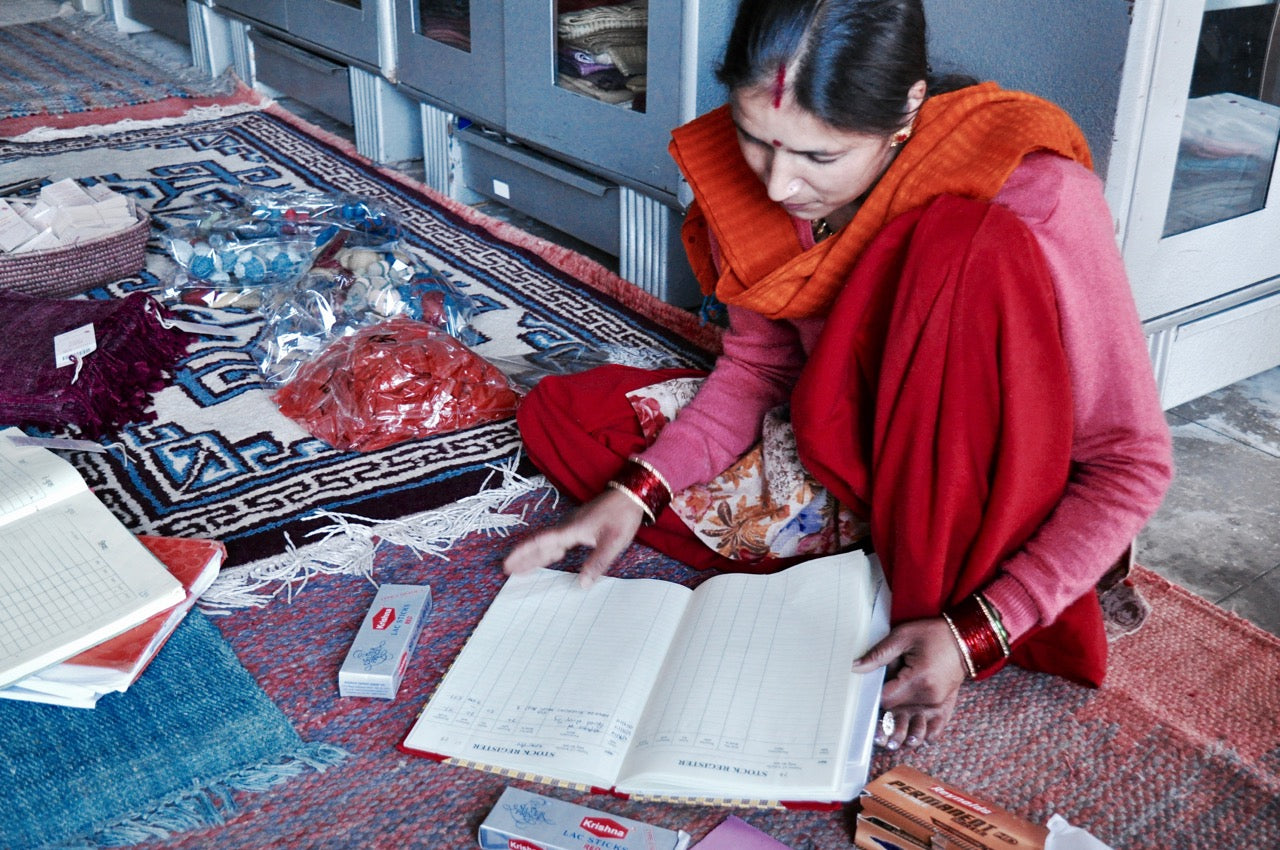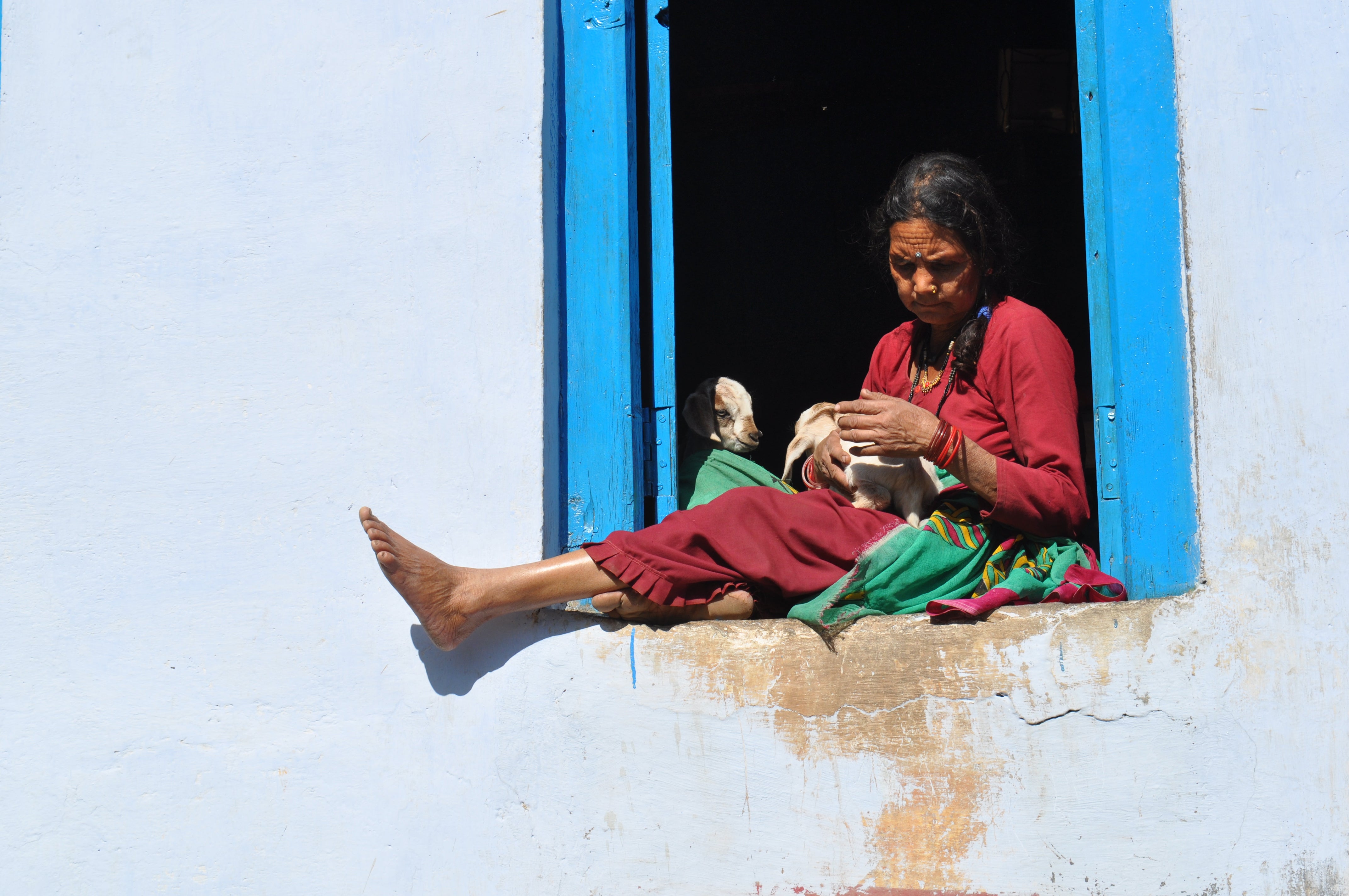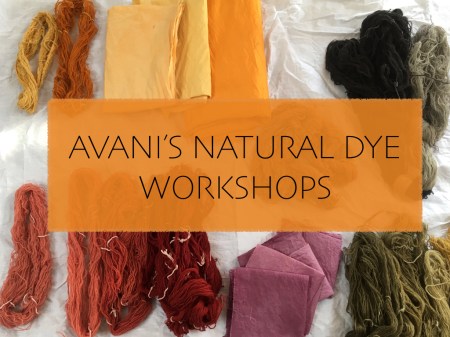
A week of dyes at Avani - fixing the colours of nature onto fabric
This week, we ran our fifth natural dye workshop at our Tripuradevi campus. Our two interns participated along with two lovely ladies who came all the way from Rajasthan!
This is one intern's account of the workshop.
 Avanis' three master-dyers, Kamela-di, Neema-di and Dheeraj-da, spent the first three days walking us step-by-step through the dyeing process. Some of us already had experience with natural dyes, but wanted to learn new technics and colours, whilst others were complete beginners. We learnt to make mordant, prepare the cloths and yarn we wanted to dye, make an indigo vat (which is the substance in which fabric must be dipped to be dyed), and made a batch of iron water. Iron water is a solution which allows to change the tint of some dyes through chemical reaction with the rust found in iron. We prepared black, yellow, green, red and brown dyes ourselves from walnut shells, crushed lac, eupatorium leaves and myrobolan shells.
Avanis' three master-dyers, Kamela-di, Neema-di and Dheeraj-da, spent the first three days walking us step-by-step through the dyeing process. Some of us already had experience with natural dyes, but wanted to learn new technics and colours, whilst others were complete beginners. We learnt to make mordant, prepare the cloths and yarn we wanted to dye, make an indigo vat (which is the substance in which fabric must be dipped to be dyed), and made a batch of iron water. Iron water is a solution which allows to change the tint of some dyes through chemical reaction with the rust found in iron. We prepared black, yellow, green, red and brown dyes ourselves from walnut shells, crushed lac, eupatorium leaves and myrobolan shells.  This very complex process always seemed excruciatingly difficult to me. But Kamela, Neema and Dheeraj gave us detailed, simple explanations. Despite my deep-set dread of chemistry, I even enjoyed learning how to manipulate the water's pH to change the final shade!
This very complex process always seemed excruciatingly difficult to me. But Kamela, Neema and Dheeraj gave us detailed, simple explanations. Despite my deep-set dread of chemistry, I even enjoyed learning how to manipulate the water's pH to change the final shade!
A mid-week break was necessary and we enjoyed an easy hike, amidst the tall oak and pine trees, through which we could peek at the rolling blue hills and crisp white mountain peaks of Kumaon. We also collected leaves, berries and flowers. Back at base camp, we used these to try our hand at eco-printing. This technic allows the fixing of colour onto cloth directly from a leaf, flower or fruit. We experimented a bit with two different ways to do it. It was so much fun arranging the different items onto a piece of cotton, and allowing the results to surprise us. I can't wait to hang mine up in my room.



 Friday and Saturday, we then were able to put into practice what we had learned, with the help of Neema-di. We're also experimenting with madder roots, marigold flowers and flame of the forest. We wanted to see how we could manipulate the basic dyes to create a range of exciting hues in red, oranges, purples and pinks. We tried mixing dyes, changing the pH of the water, changing the ratios of dye extract to fiber, with more or less success.
Friday and Saturday, we then were able to put into practice what we had learned, with the help of Neema-di. We're also experimenting with madder roots, marigold flowers and flame of the forest. We wanted to see how we could manipulate the basic dyes to create a range of exciting hues in red, oranges, purples and pinks. We tried mixing dyes, changing the pH of the water, changing the ratios of dye extract to fiber, with more or less success.

Saturday, our indigo vat was finally (more or less) ready for use, and we got to try out shibori and tie-dye technics with the fabrics we then dipped into the dramatically blue vat, which was clearly the highlight of the week.
Text by Emilie Thevenoz and Photos by Camille Parker and Emilie Thevenoz




 Login
Login